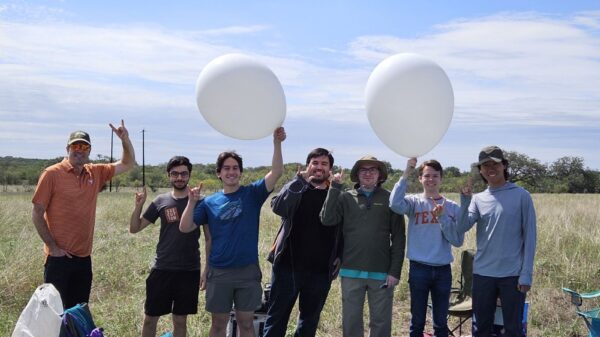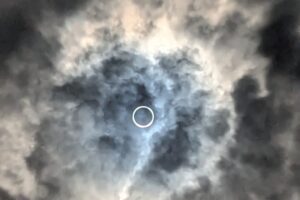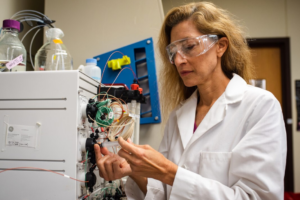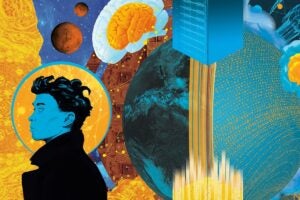
An event as rare as a total eclipse warrants eyes from every angle. On April 8, the Forty Acres will be a prime ground-level observation point. The Texas Eclipse Ballooning Project (TEBP) aims to add the stratosphere to angles observed from a Longhorn’s point of view.
The TEBP, a capstone project designed by six aerospace engineering seniors with the guidance of Cockrell School of Engineering faculty member Adam Nokes, is an ambitious piece of fabrication and research. The group designed and built a custom payload that they will attach to a high-altitude balloon to be launched in time to capture unique data during the totality of the Great North American Eclipse.
These students — Arshan Saniei-Sani, Aytahn Benavi, Samuel Mack, Jonathan Williams, Matthew Nattier and Jason Deng — got plenty of practice designing and launching an airborne research lab during the October 2023 annular eclipse. Considering the relative rarity of these events, the team is taking full advantage of the opportunity to conduct this unique research twice in one year by improving even further on their original design. The new payload includes an advanced high-altitude tracker, a new temperature, pressure and accelerometer sensor, a new data recovery system, a camera that will stream the ascent, and a new computer that will help the team retrieve the equipment when it returns to the ground.


During its flight, the balloon will climb upwards of 100,000 feet above the Earth’s surface, reaching the stratosphere and traveling nearly one-tenth of the way to the International Space Station. At this height, if you were somehow able to strap into the balloon and follow it up on its ascent, you would see the vast curve of the Earth and a universe full of stars. One of the project’s goals is to test the limits of high-altitude streaming video, so we’re crossing our fingers that we can still watch this entire journey in real time.
After the team retrieves the data gathered by the balloon and payload, they’ll begin the process of sorting and categorizing the information with the goal of adding to the global understanding of atmospheric conditions during total solar eclipses. And as part of the larger National Eclipse Ballooning Project (NEBP) hosted by NASA and the Montana Space Grant Consortium, they’ll be able to do just that.
Working closely with other participants in the NEBP who have seized this moment to gather information up and down the path of totality, the team will contribute to a large study that will generate new insights on how the eclipse affects our atmosphere. The team’s research, paired with their future publications and outreach to students in local schools, is building a strong foundation for more big questions and even more answers the next time the path of an eclipse travels across the Forty Acres.



